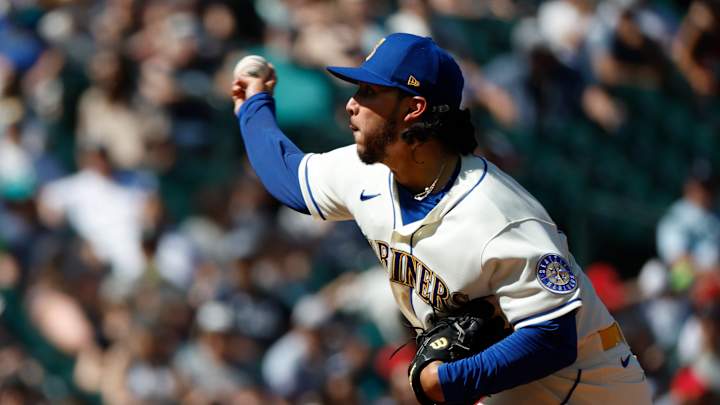Breaking Down Mariners RHP Andrés Muñoz With Bill Hezel of Driveline Baseball

In this story:
On August 30, 2020, the Mariners struck a deal with the Padres that brought Ty France, Taylor Trammell, Luis Torrens and Andrés Muñoz to Seattle for Austin Nola, Austin Adams and Dan Altavilla.
The deal is reflected upon fondly for the value the Mariners received, especially in regards to France, who earned All-Star honors in 2022. Muñoz, however, has been a gem as well—so much so that Seattle signed him to a four-year extension this offseason after just one inning in a Mariners uniform.
I sat down with Bill Hezel of Driveline Baseball to take a look at Muñoz's breakout season thus far and what makes him so special.
Driveline is a facility that looks to help players improve through use of data, research and constant iteration.
You would think with a reliever who throws a fastball anywhere in the neighborhood of 100-103 MPH would use it as his primary pitch, but not with Muñoz. According to Baseball Savant, he makes use of his slider a whopping 60.8 percent of the time, deploying his electric fastball sparingly.
While the fastball is a marvel, the slider has been the key to turning Muñoz's season around. According to Driveline's Stuff+ metric, it ranks at a 120, with 100 being average. The difference in his slider this year from his lone appearance last season is the velocity.
Muñoz is throwing his slider around 88 MPH this season, while it was closer to 83-84 last year in brief action. It has been absolutely devastating to opposing hitters, registering an astounding 50.6 percent whiff rate.
By popular demand: Andres Munoz copy pasting three sliders to Springer with identical results. pic.twitter.com/zUc4eLIk1D
— Gravel (@Gravel_sense) July 10, 2022
The fastball as a secondary pitch is just downright silly. Driveline's Stuff+ has it ranked as a 146, which is amazing for a secondary offering. It averages 100.1 MPH on the gun, which plays up off a slider-heavy approach.
Muñoz is coming off of Tommy John surgery, which usually affects command. That certainly proved to be the case for Muñoz earlier in the season, but he has improved his miss distance drastically since June 15. Miss distance categorizes how close the pitch ends up to the intended target.
"He has taken about an inch to an inch-and-a-half off of his miss distance since June 15, which is pretty crazy," Hezel says.
It is hard to tell what has led to the improved command from him, but one thing Hezel points to is the implementation of a new targeting strategy from Mariners player development. That's how the catcher sets up his target, trying to get the best result.
Mariners catchers have gone to a new strategy with Muñoz on the hill. Typically, they will set up right down the middle for him, even against some of the best hitters in the world.
Andrés Muñoz wins a nine-pitch battle with Jose Altuve for a K ... He's struck out each of the past nine hitters he's faced. pic.twitter.com/ZOjv5a8ao1
— Daniel Kramer (@DKramer_) April 17, 2022
The catcher usually sets up a more dramatic target to get the pitcher to throw towards, but as Hezel explains, "You don't need to be so fine when you throw 100 MPH fastballs and 90 MPH sliders."
This strategy could be one of the big reasons for his success following early season struggles.
Andrés Muñoz vs. Shohei Ohtani -- good morning, good afternoon, good night -- all on sliders. pic.twitter.com/SMKwiq38lA
— Daniel Kramer (@DKramer_) August 6, 2022
Muñoz is transforming into one of the very best relievers in the league, and his growth since June has been evident in the win column for Seattle.
